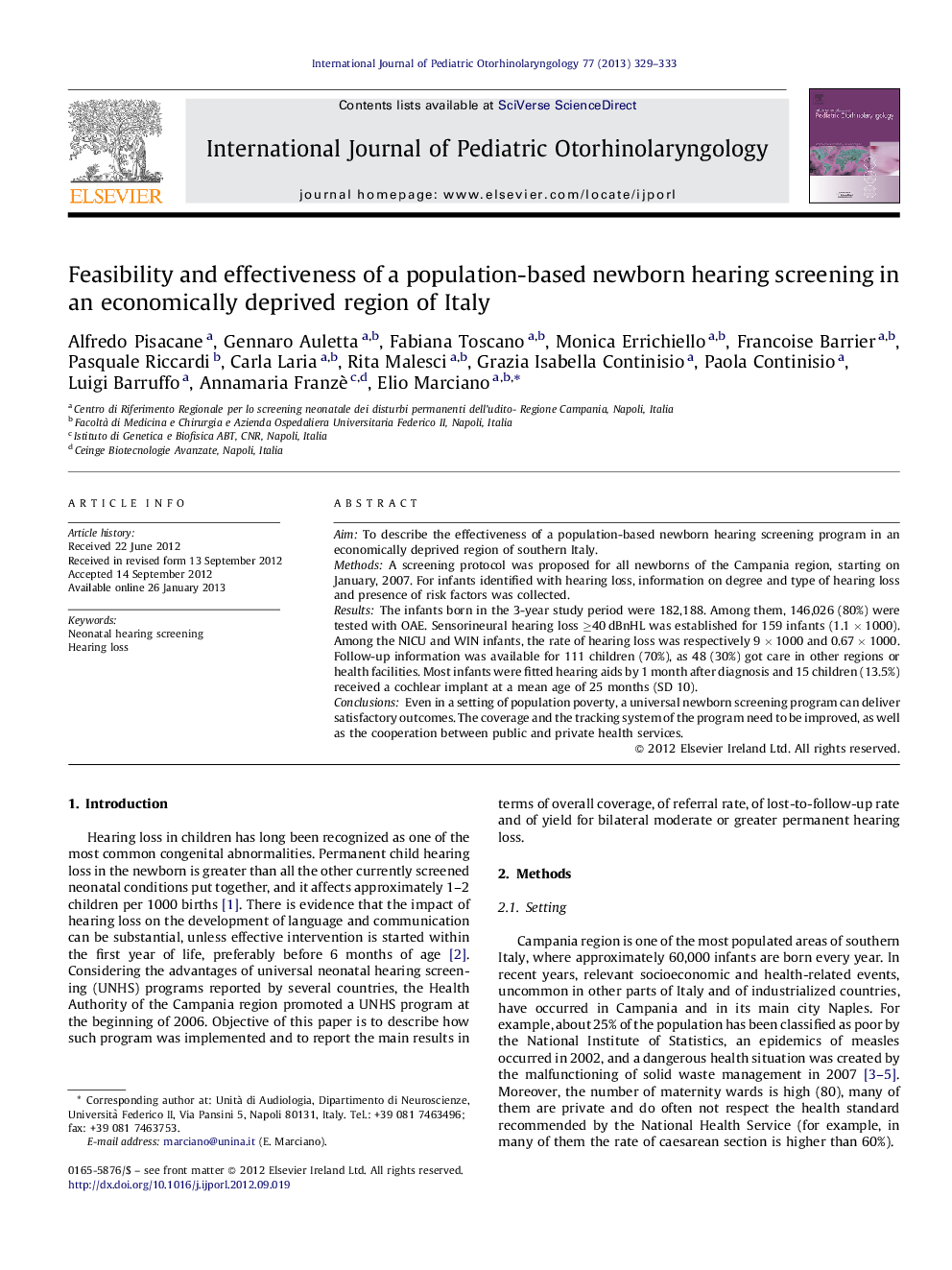| Article ID | Journal | Published Year | Pages | File Type |
|---|---|---|---|---|
| 6213630 | International Journal of Pediatric Otorhinolaryngology | 2013 | 5 Pages |
AimTo describe the effectiveness of a population-based newborn hearing screening program in an economically deprived region of southern Italy.MethodsA screening protocol was proposed for all newborns of the Campania region, starting on January, 2007. For infants identified with hearing loss, information on degree and type of hearing loss and presence of risk factors was collected.ResultsThe infants born in the 3-year study period were 182,188. Among them, 146,026 (80%) were tested with OAE. Sensorineural hearing loss â¥40 dBnHL was established for 159 infants (1.1 Ã 1000). Among the NICU and WIN infants, the rate of hearing loss was respectively 9 Ã 1000 and 0.67 Ã 1000. Follow-up information was available for 111 children (70%), as 48 (30%) got care in other regions or health facilities. Most infants were fitted hearing aids by 1 month after diagnosis and 15 children (13.5%) received a cochlear implant at a mean age of 25 months (SD 10).ConclusionsEven in a setting of population poverty, a universal newborn screening program can deliver satisfactory outcomes. The coverage and the tracking system of the program need to be improved, as well as the cooperation between public and private health services.
